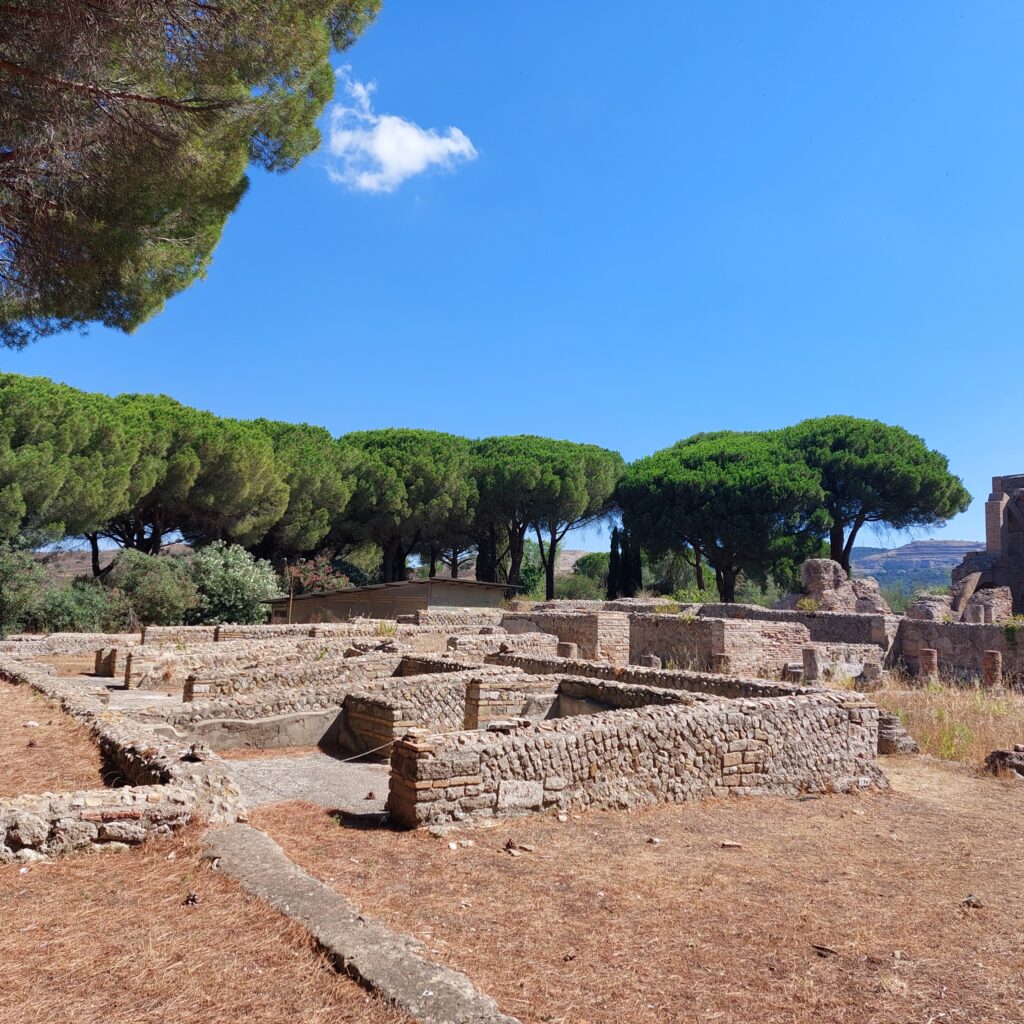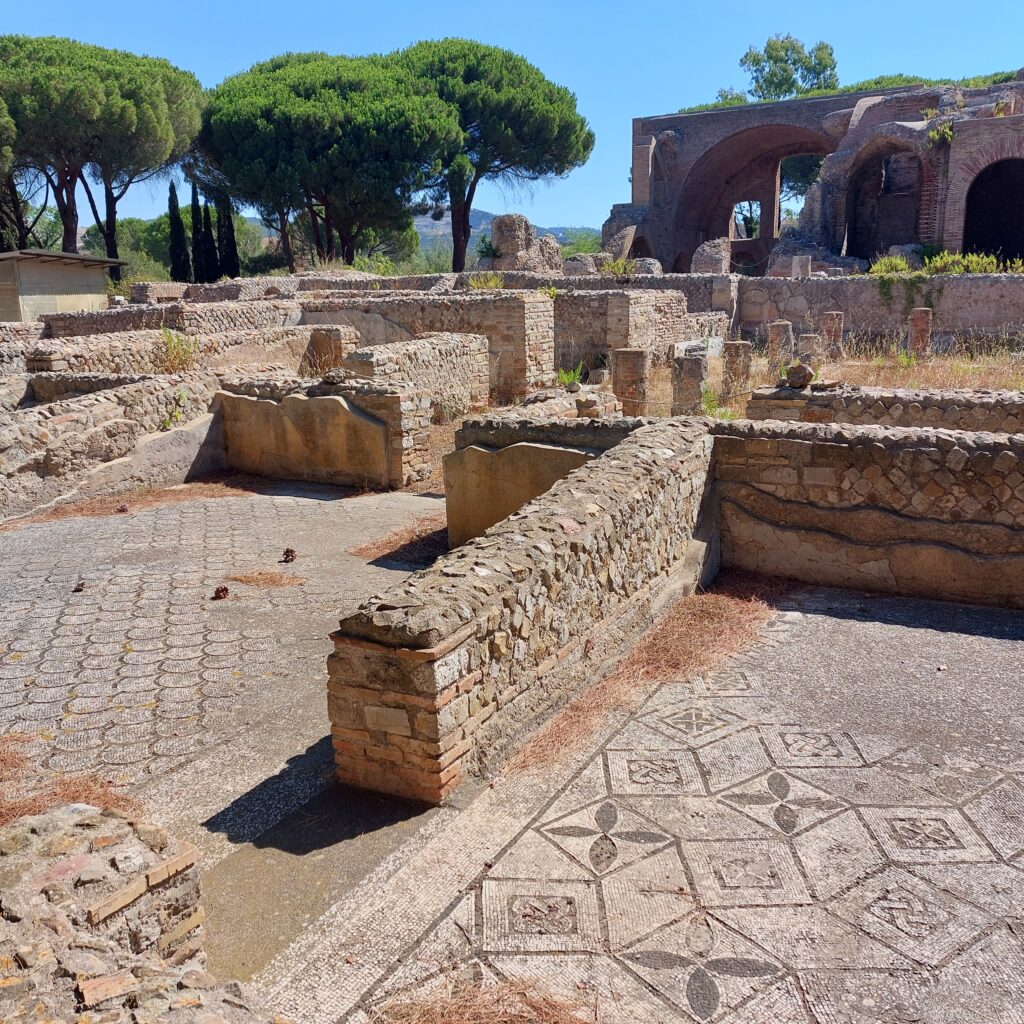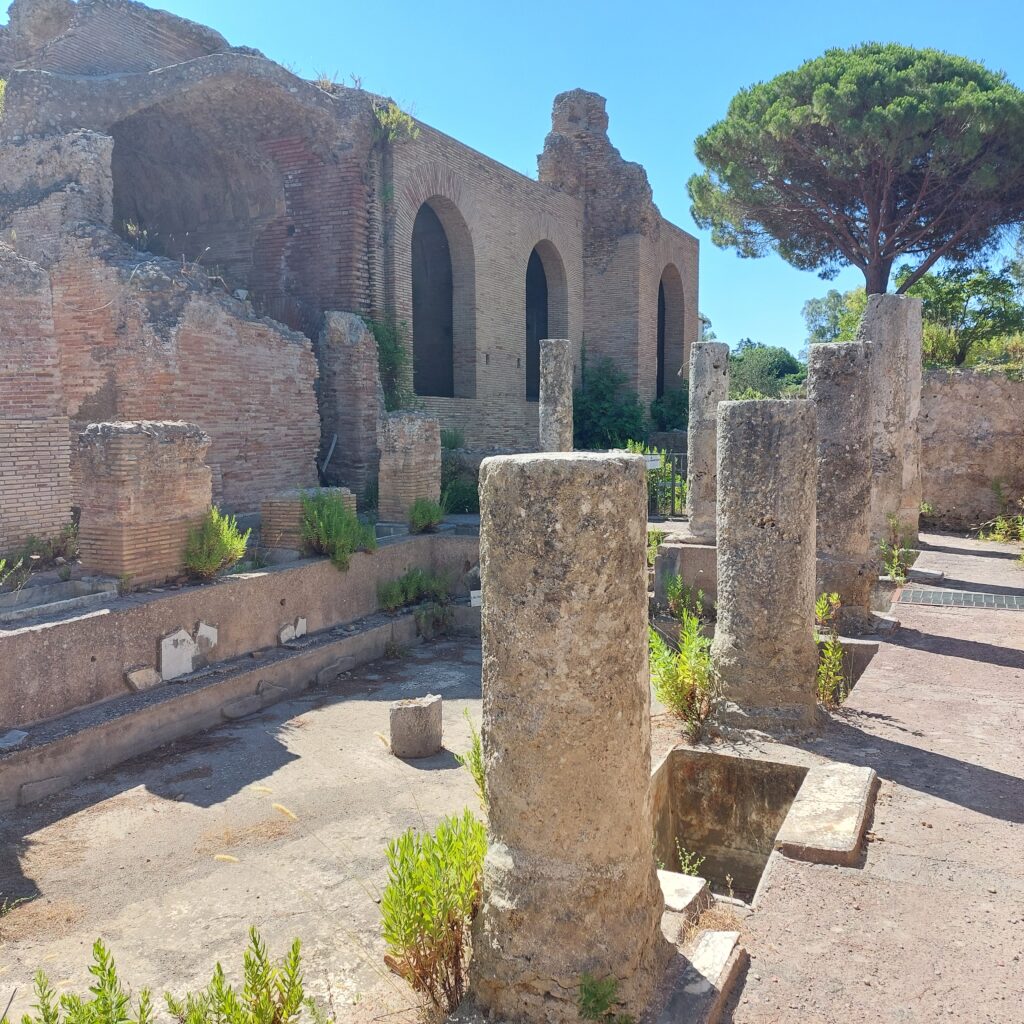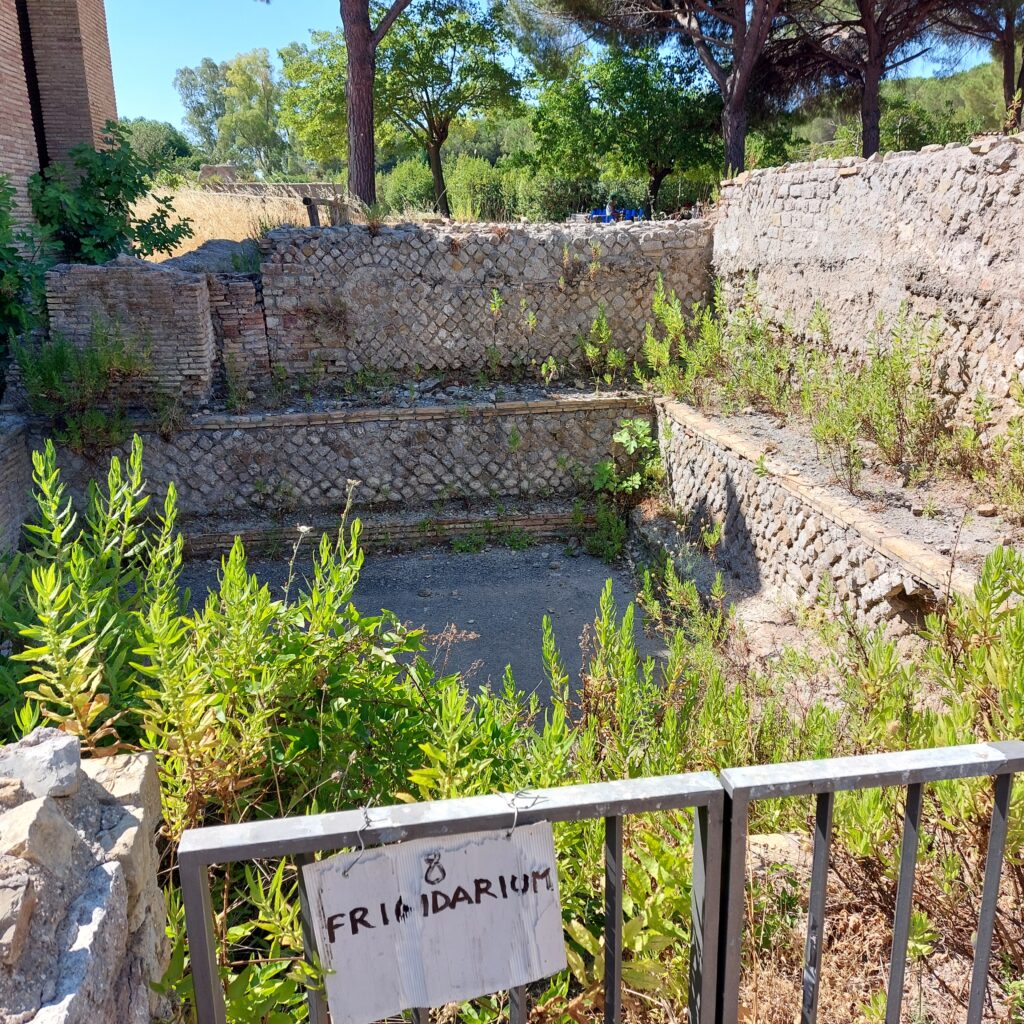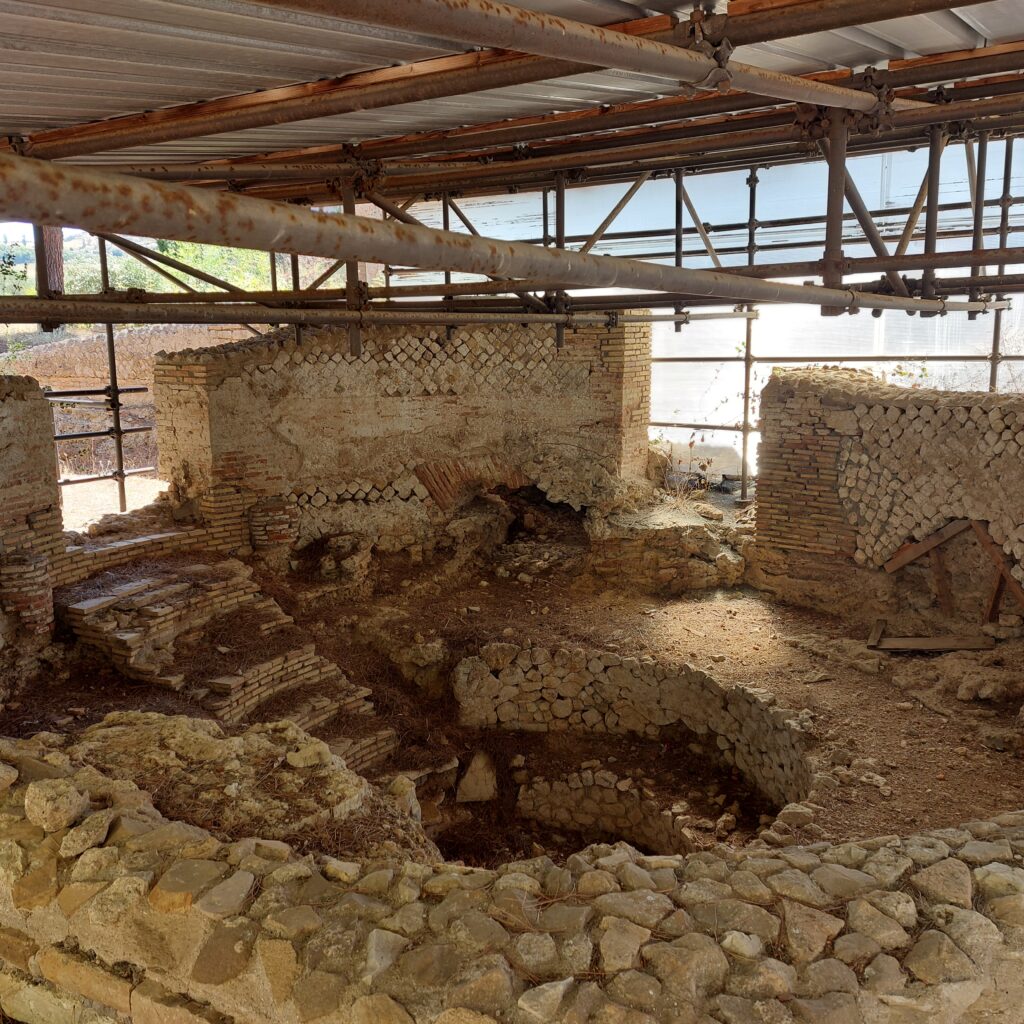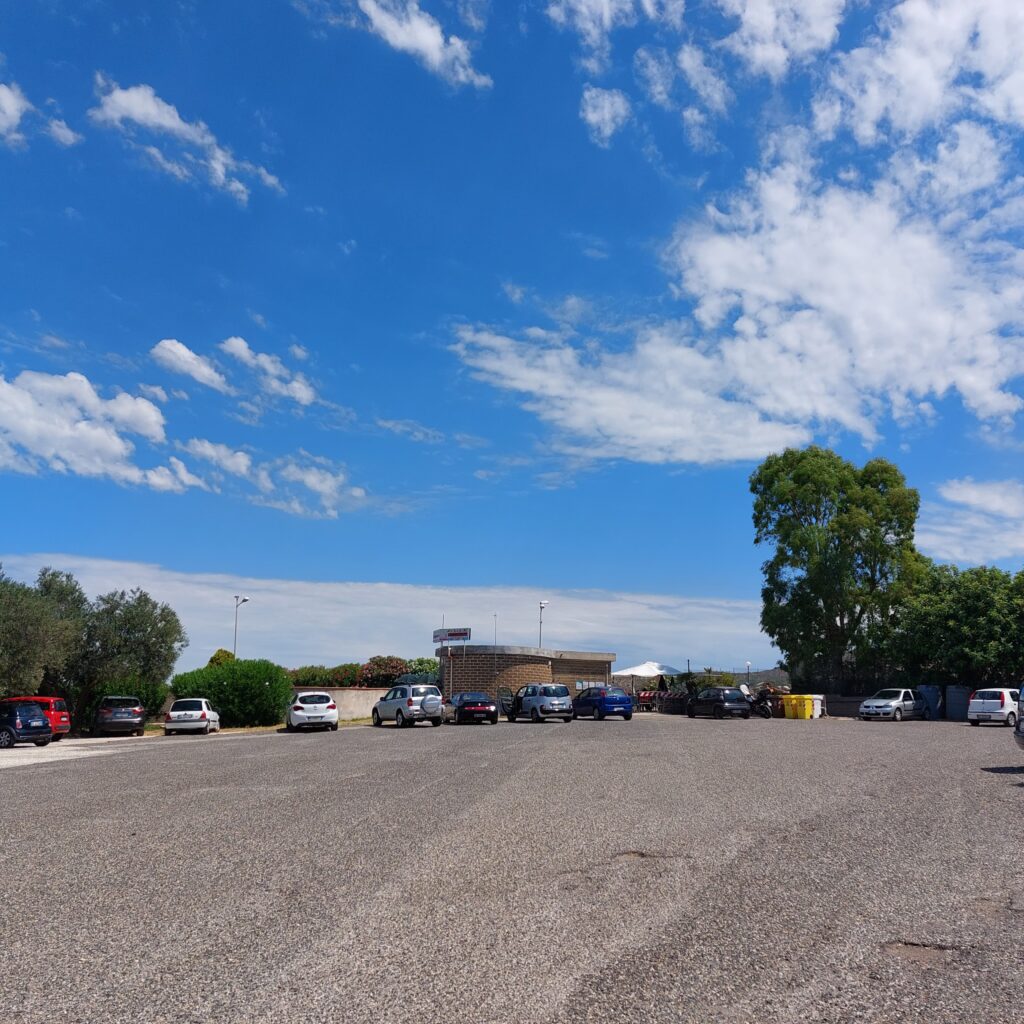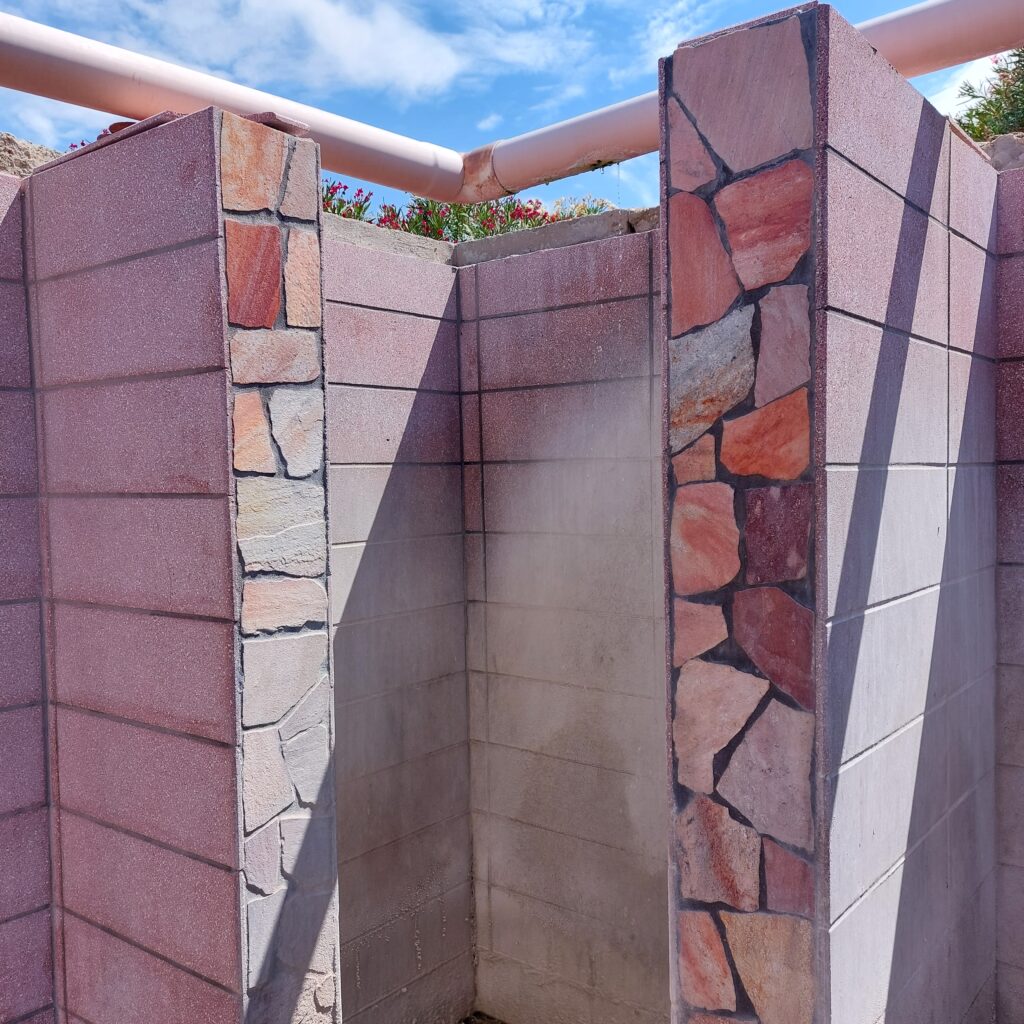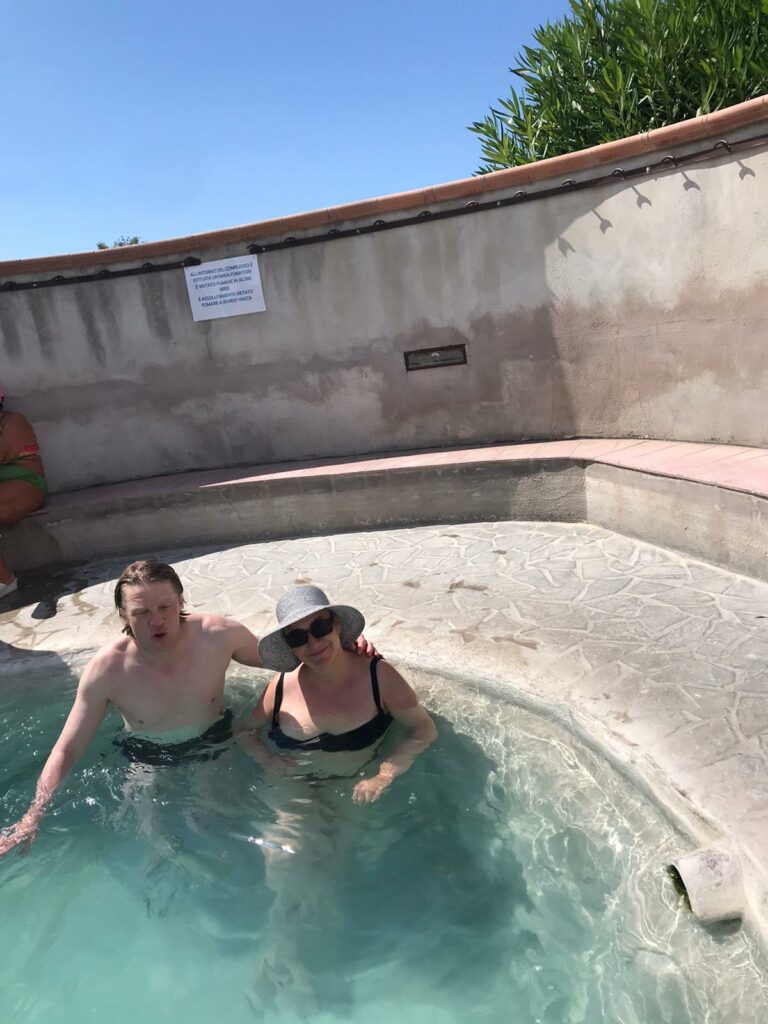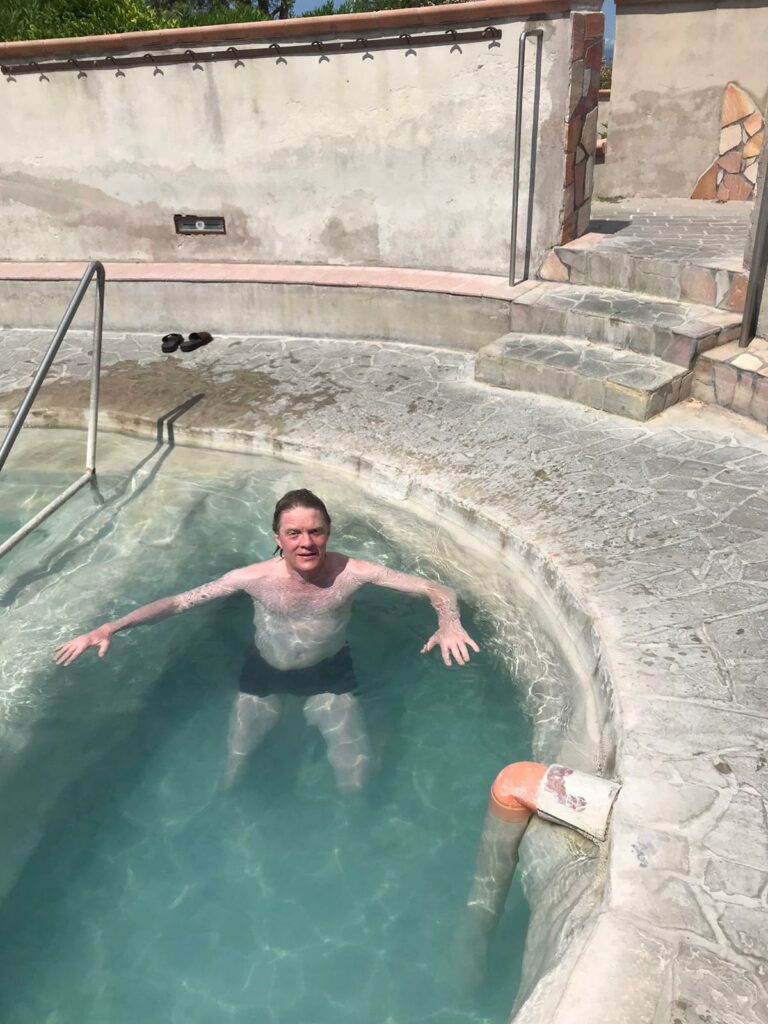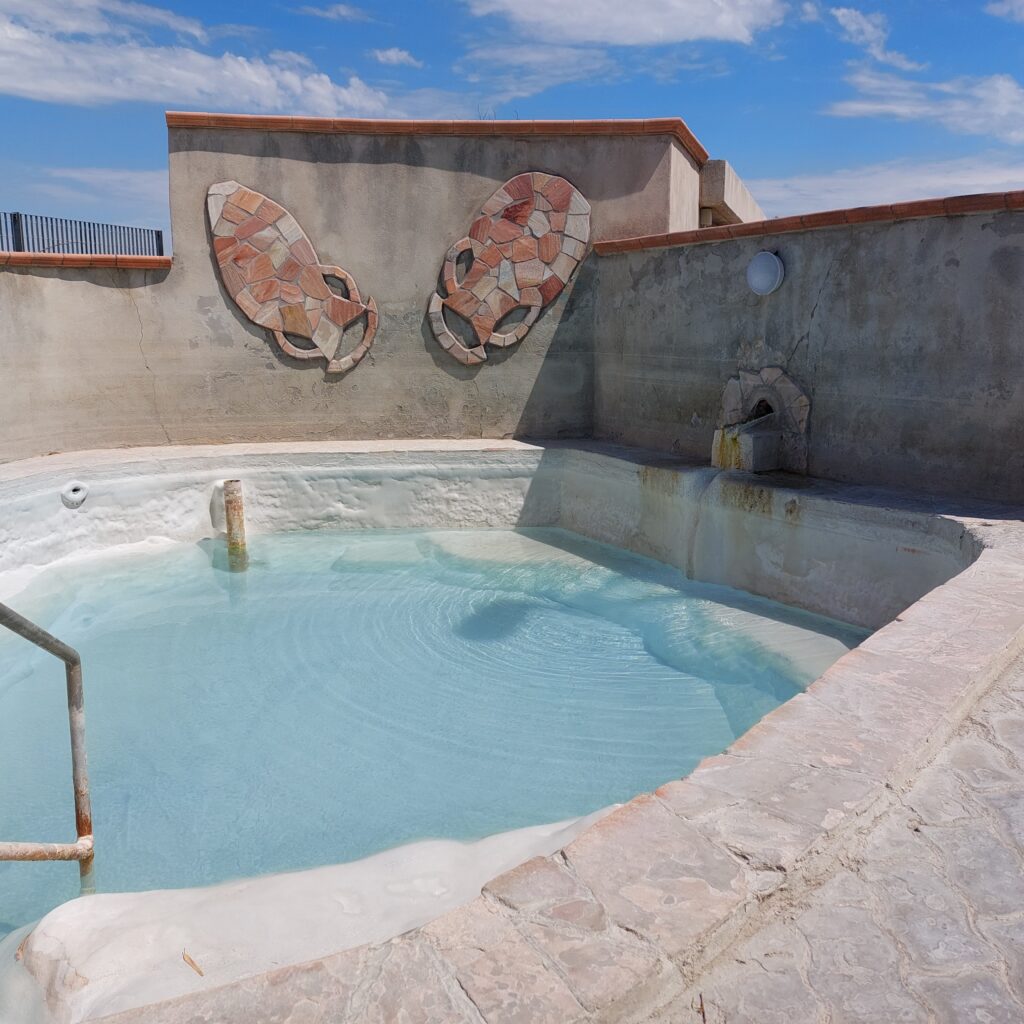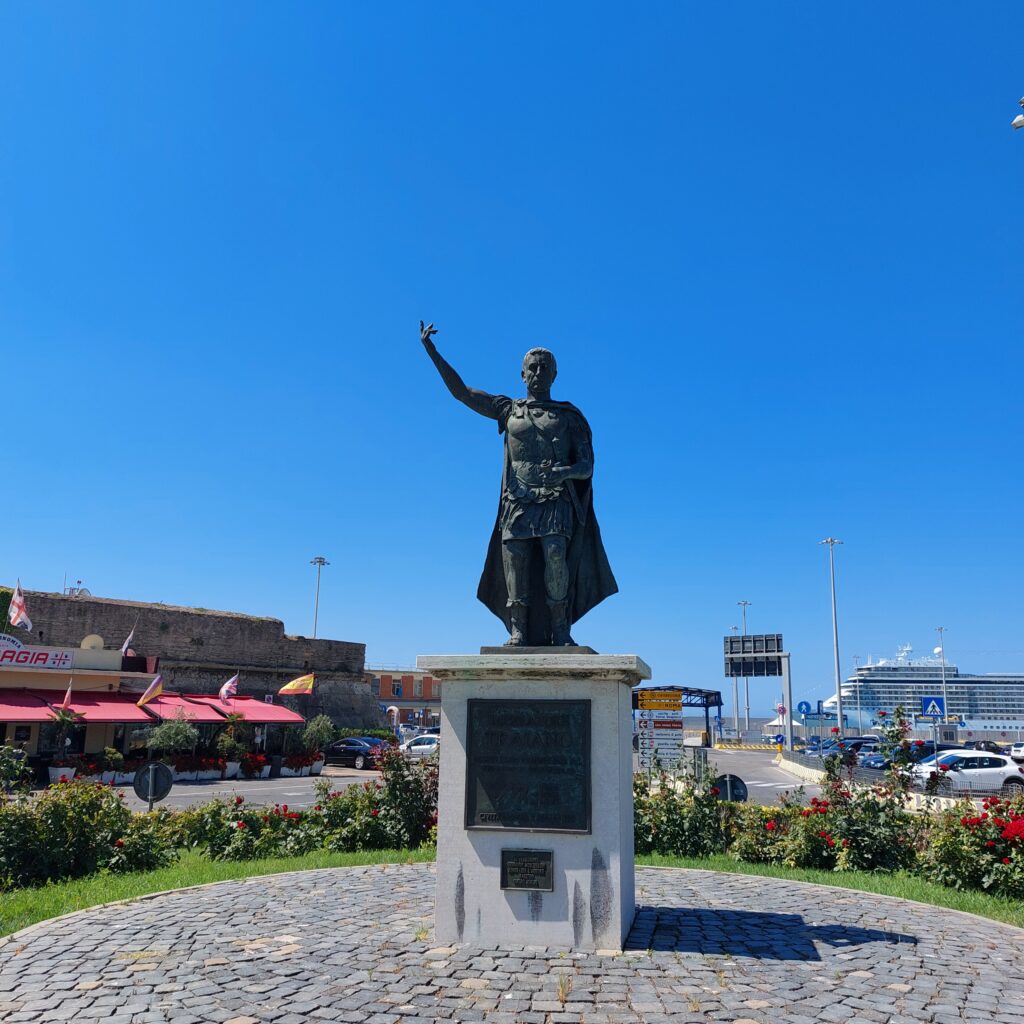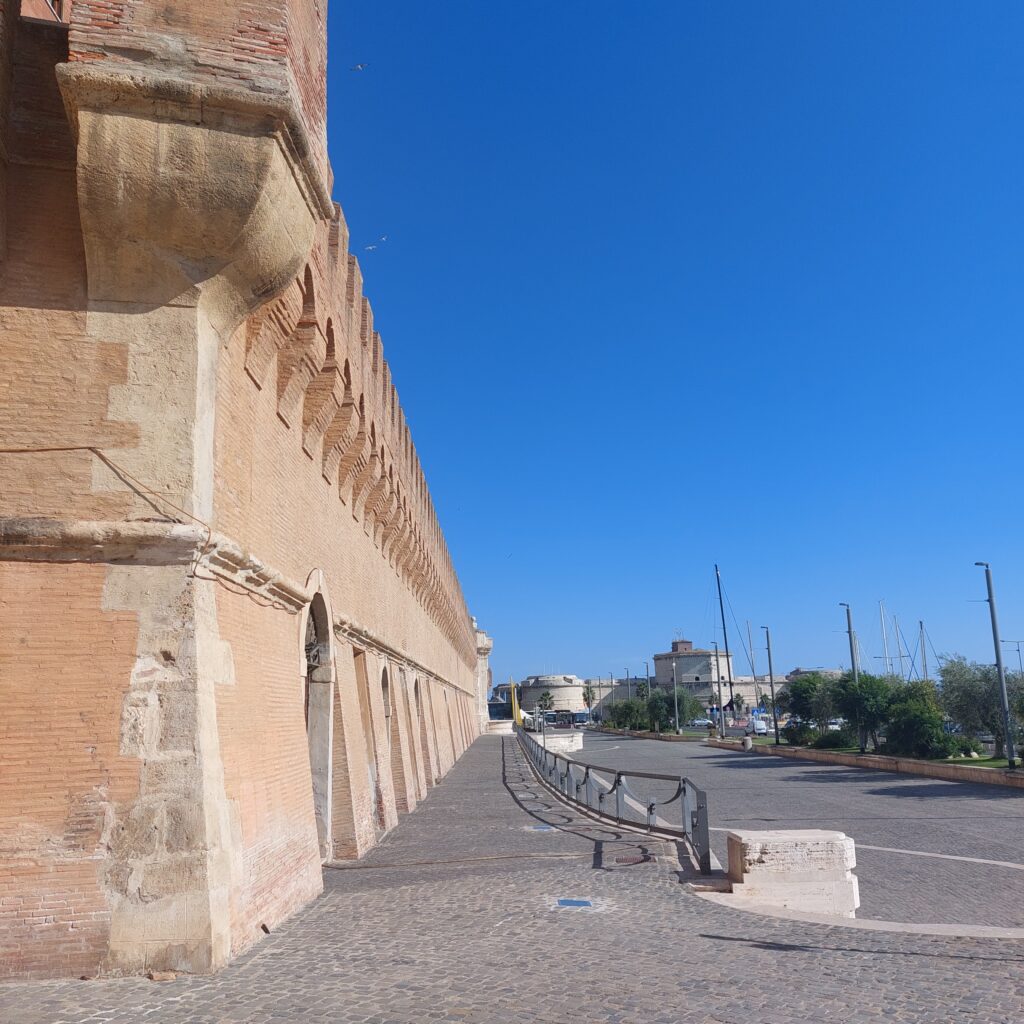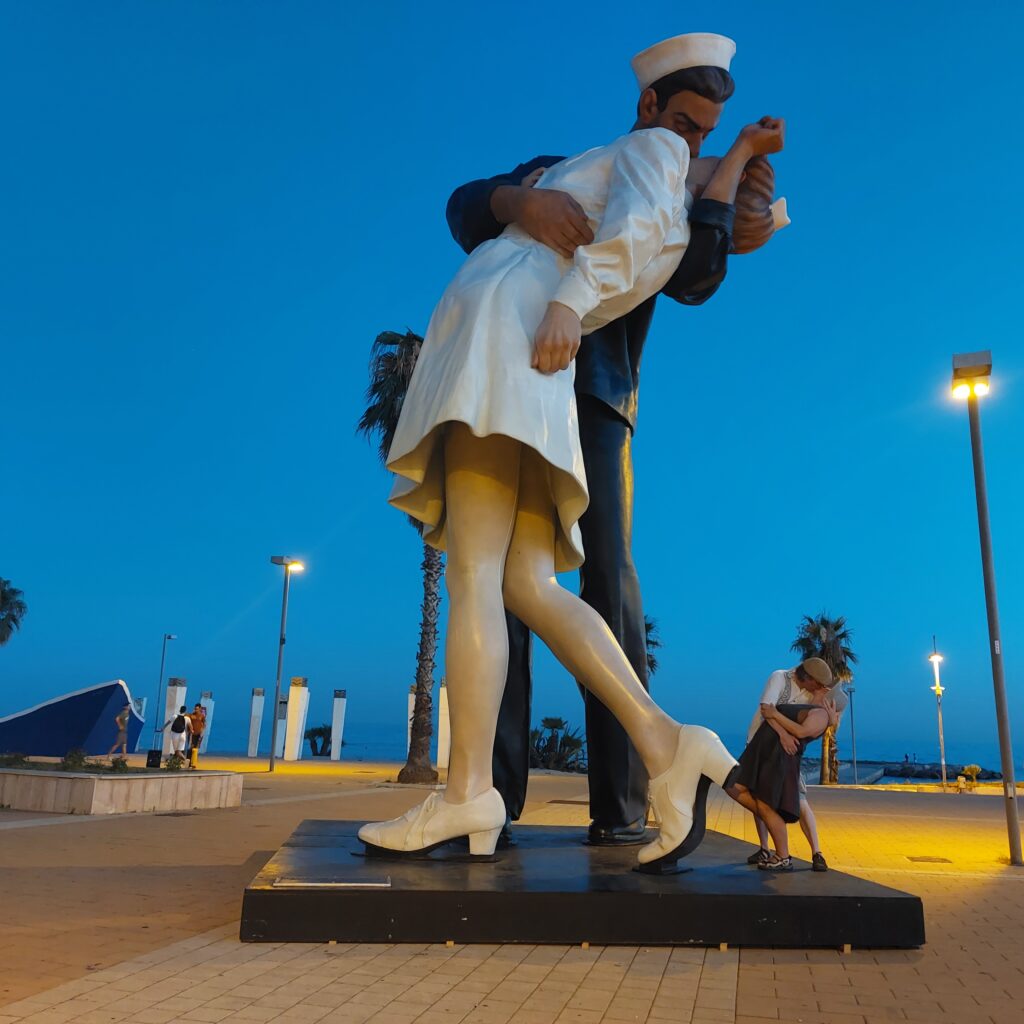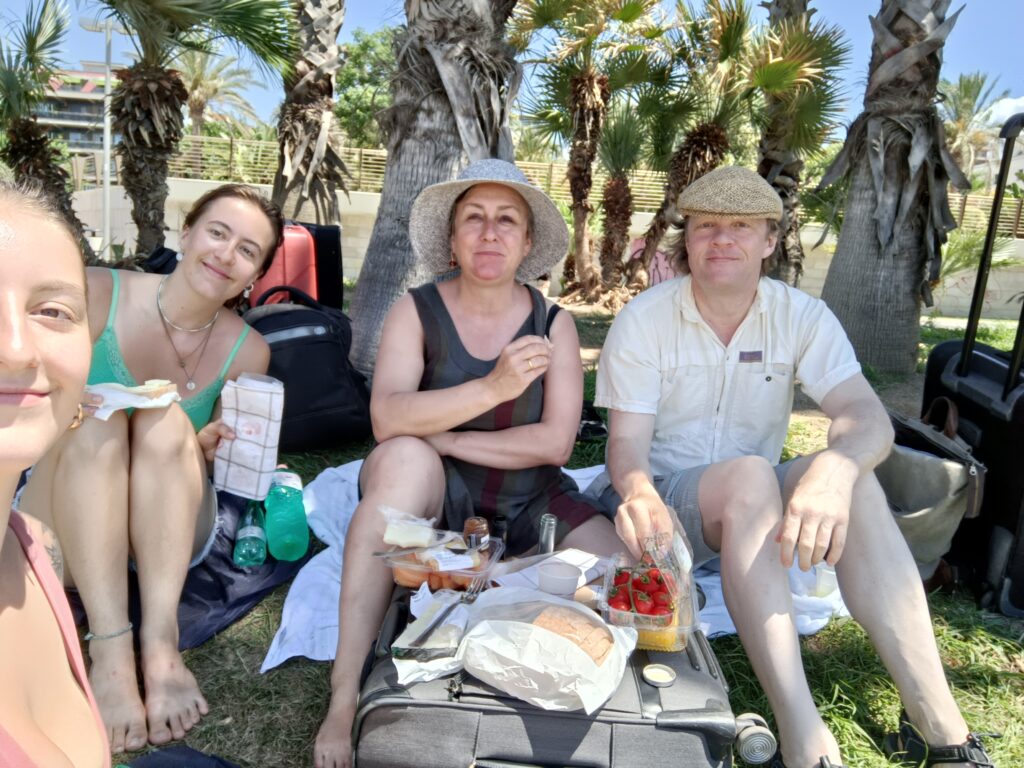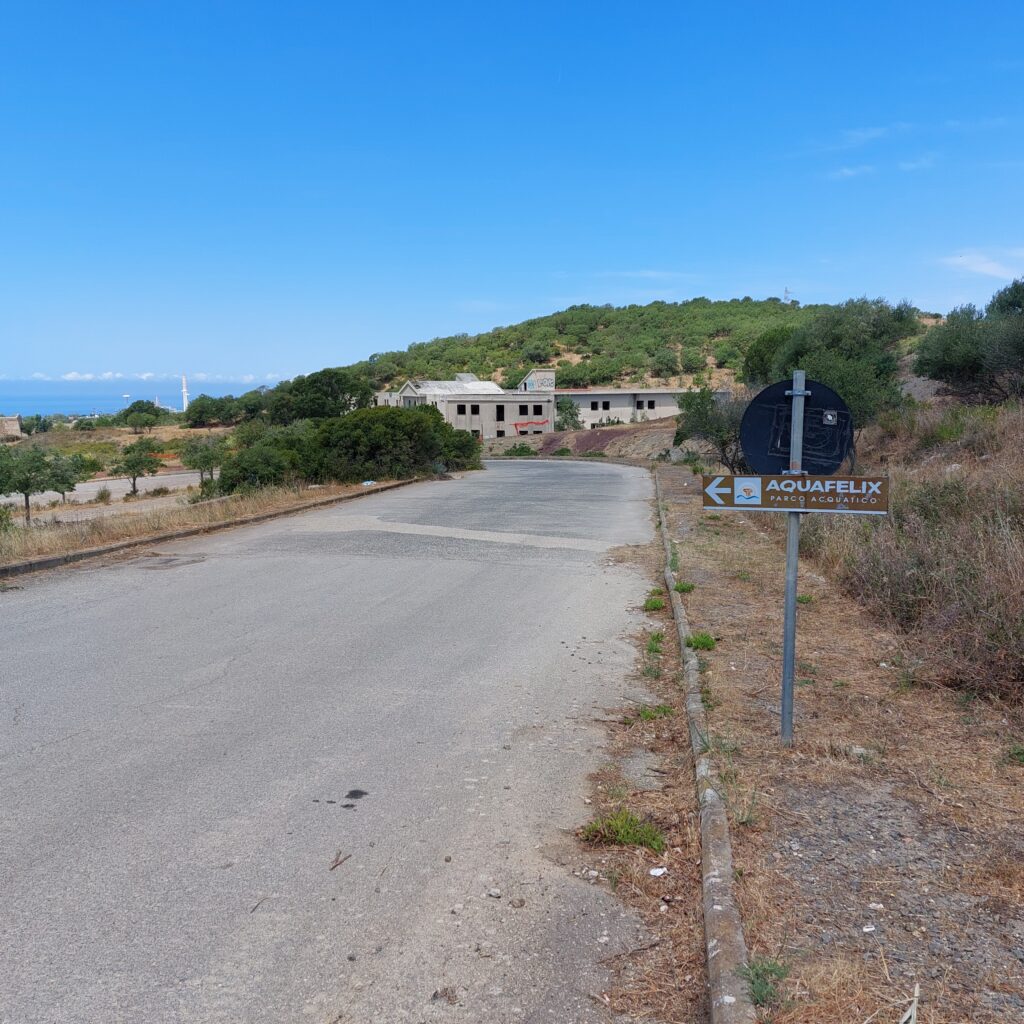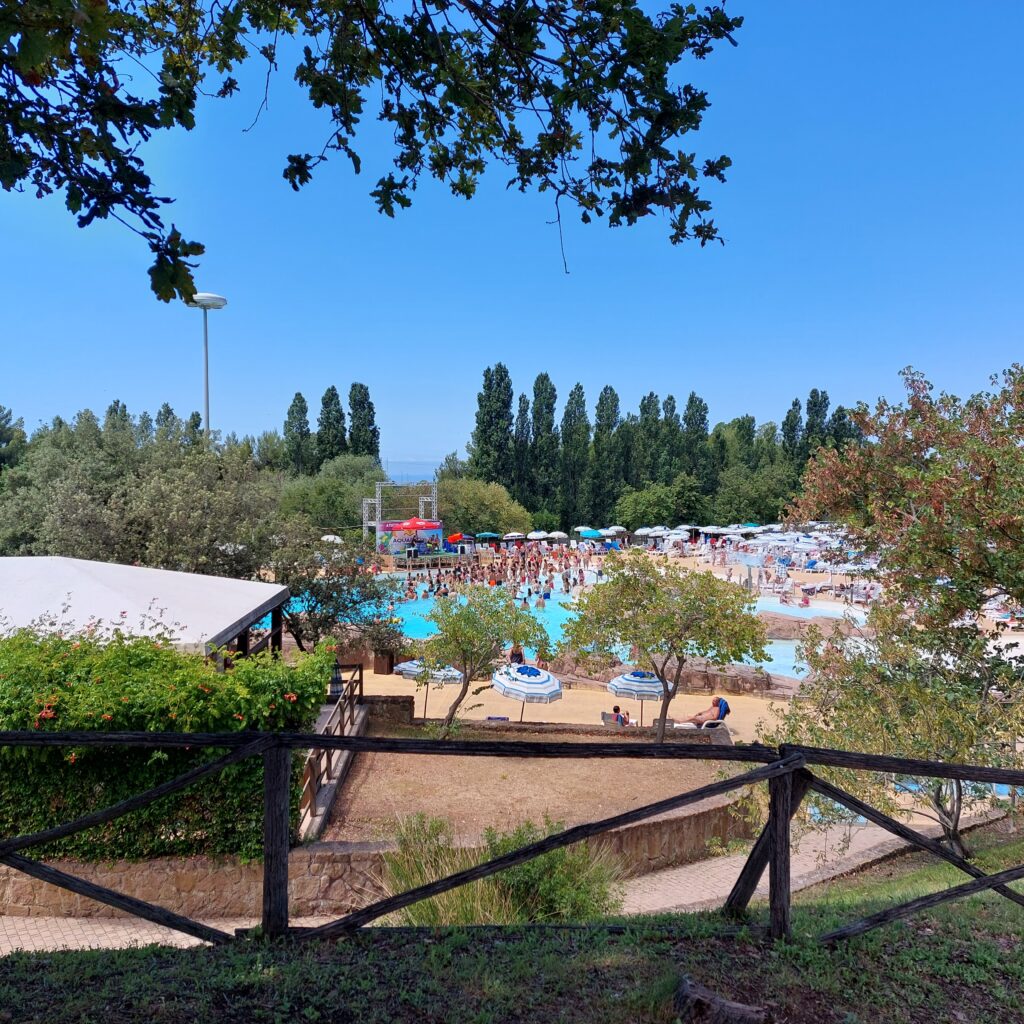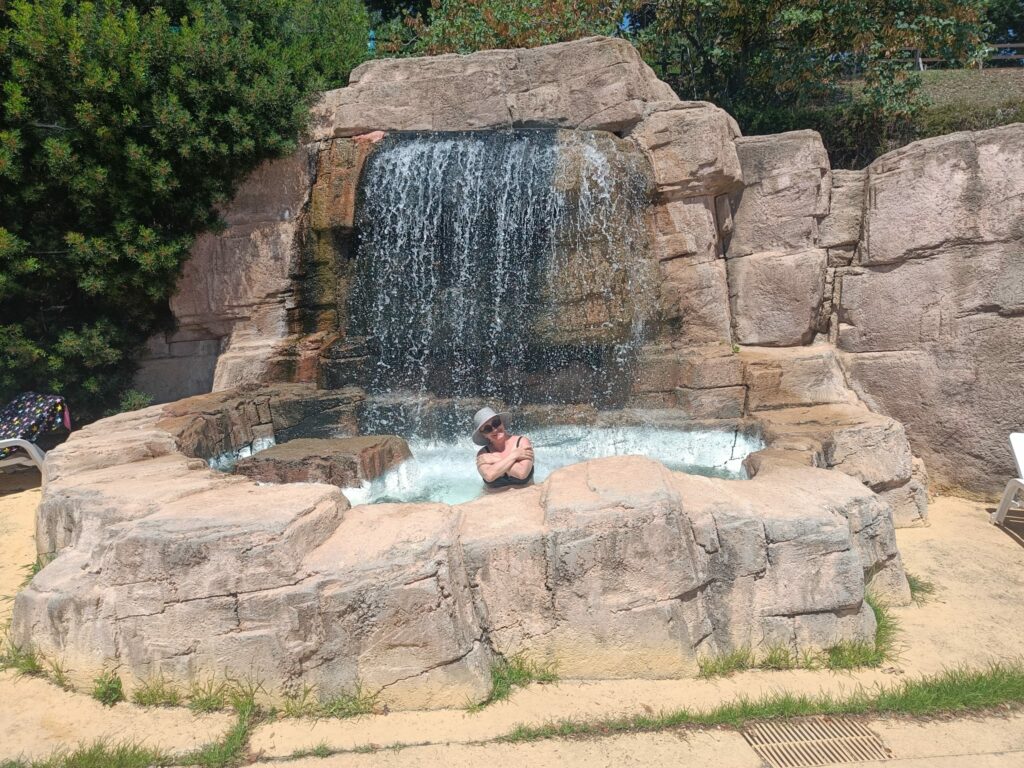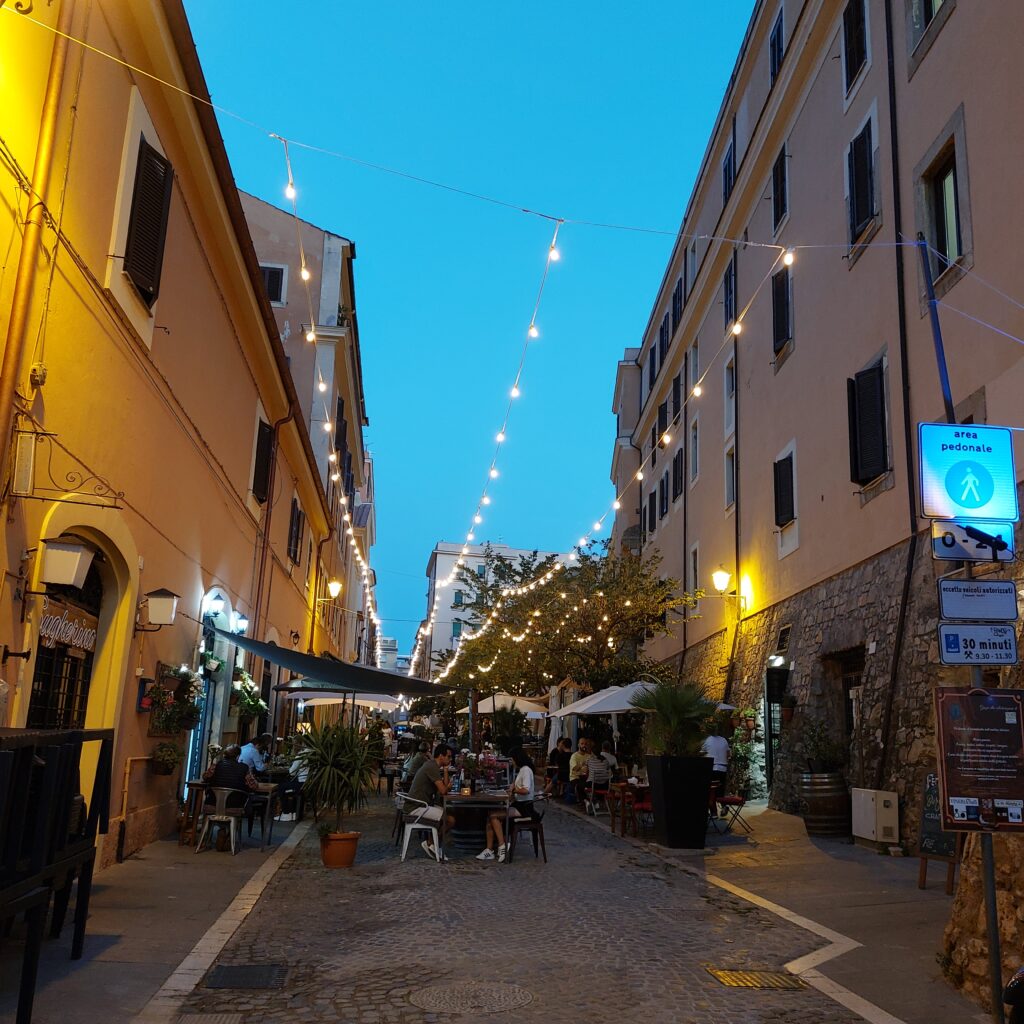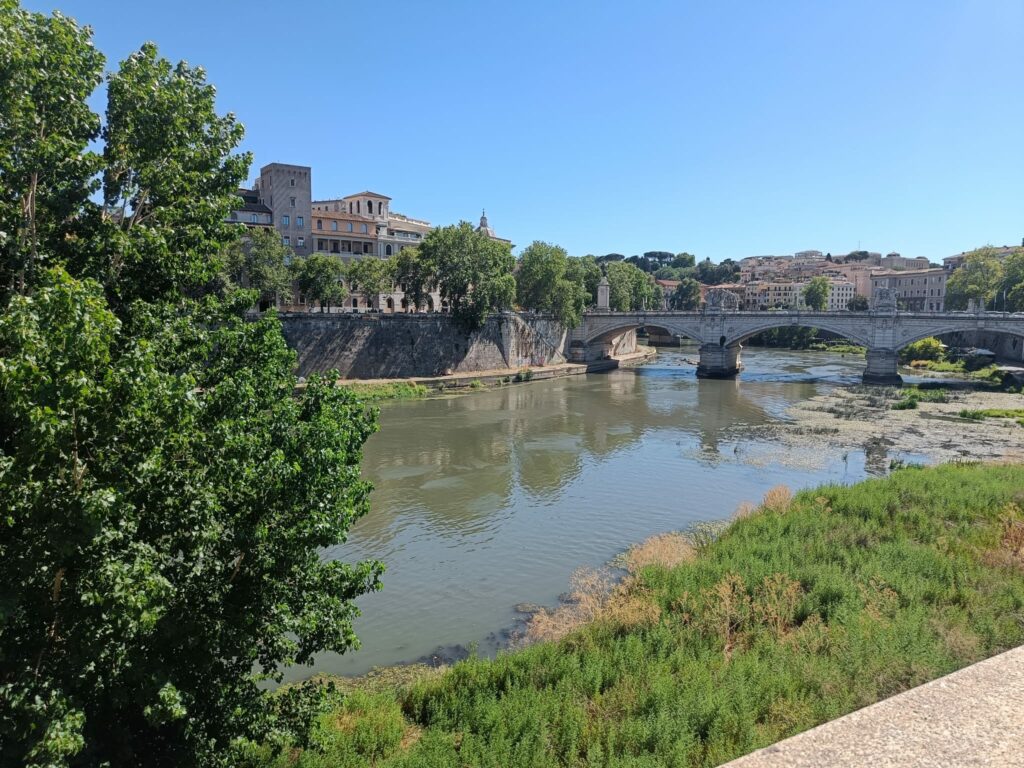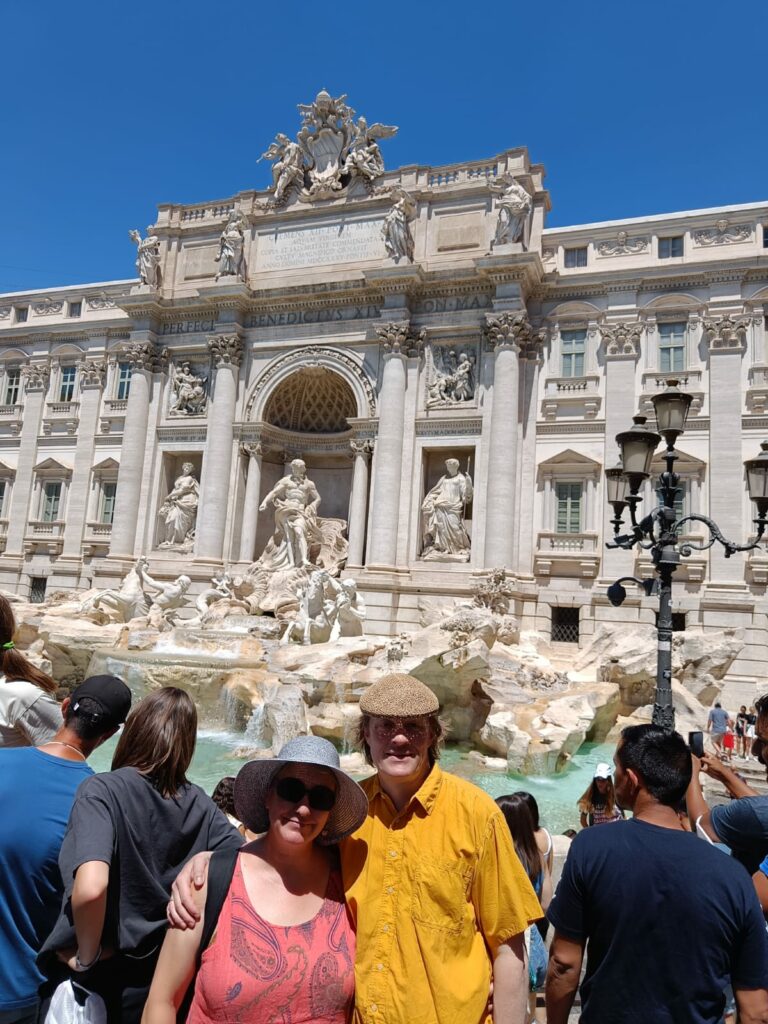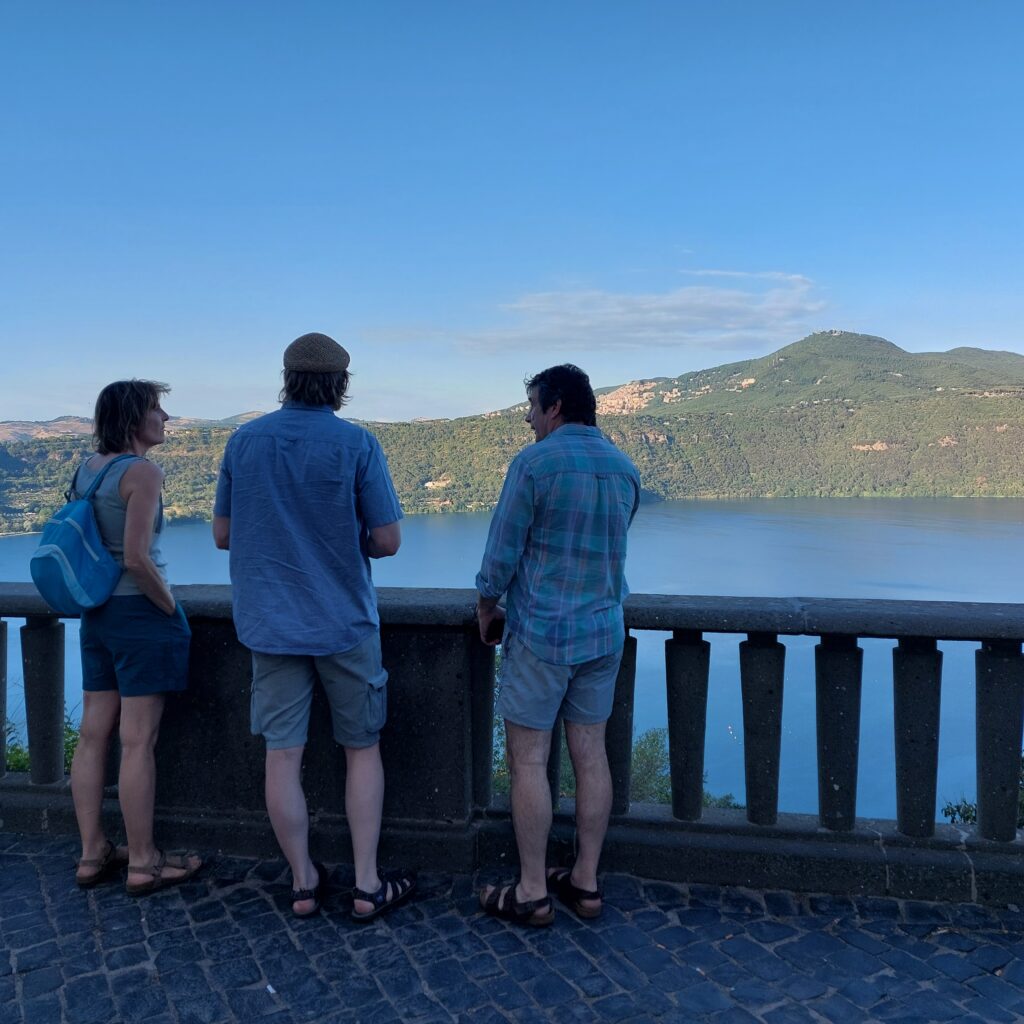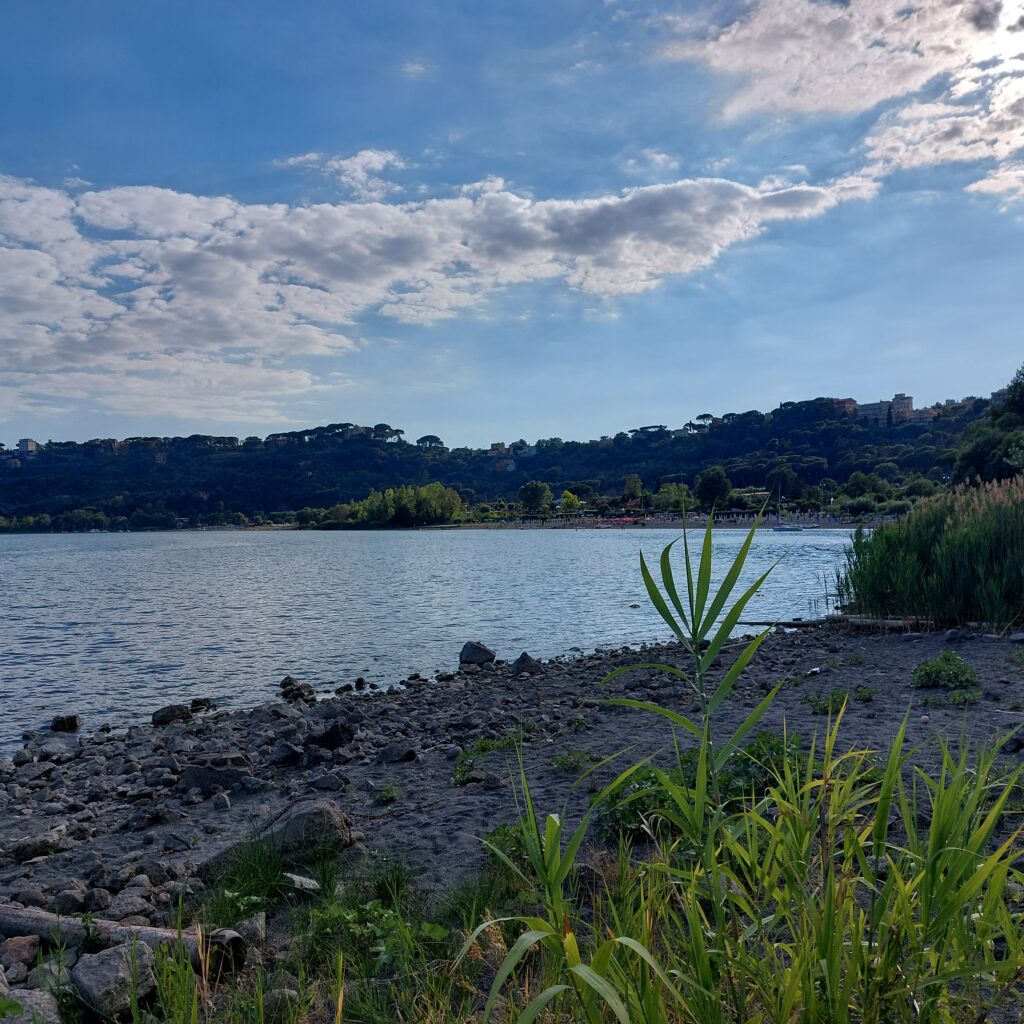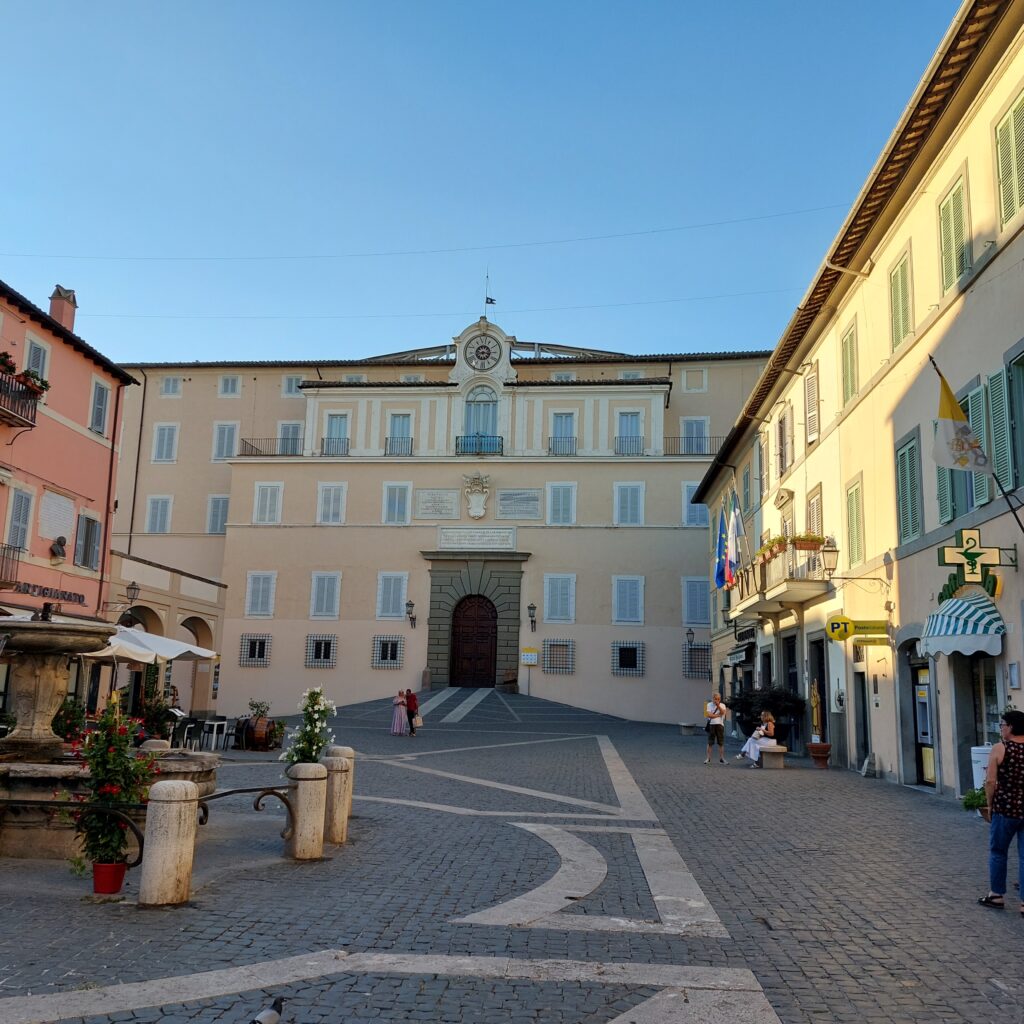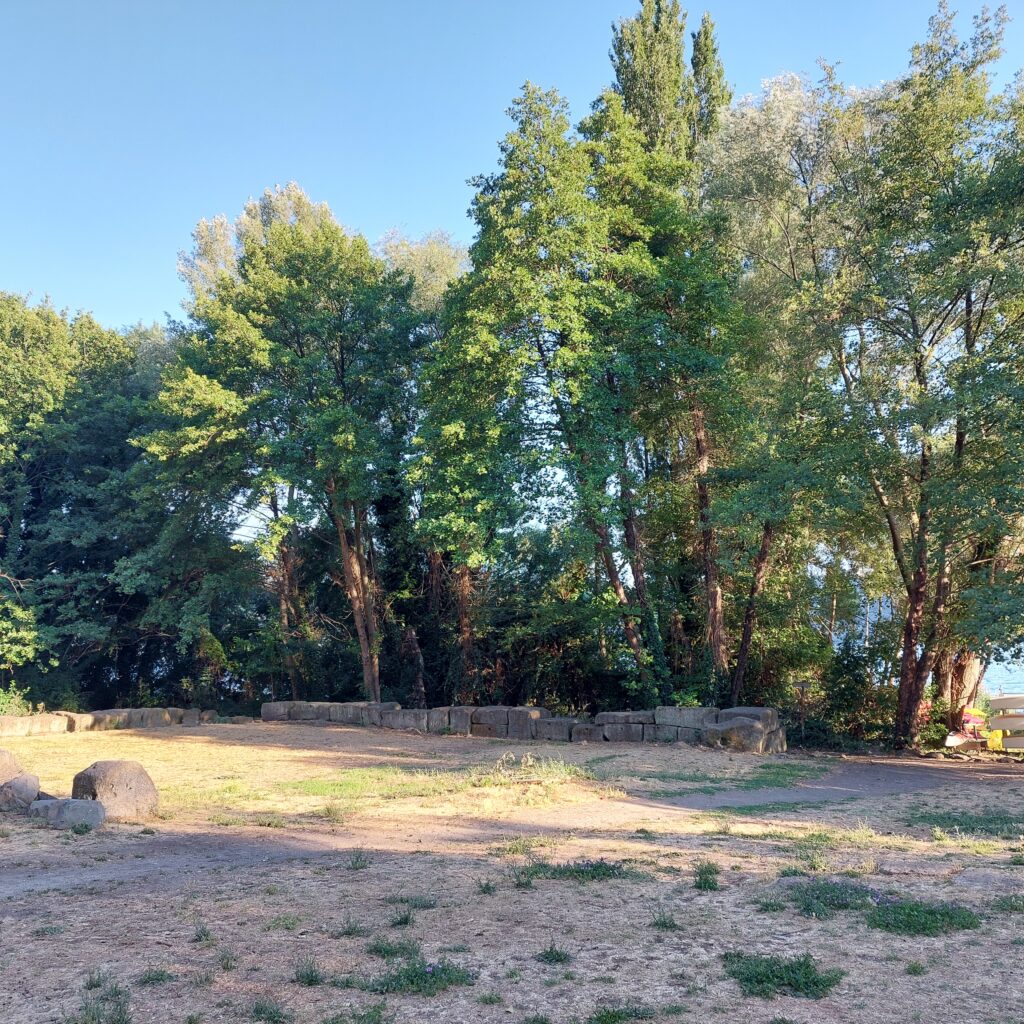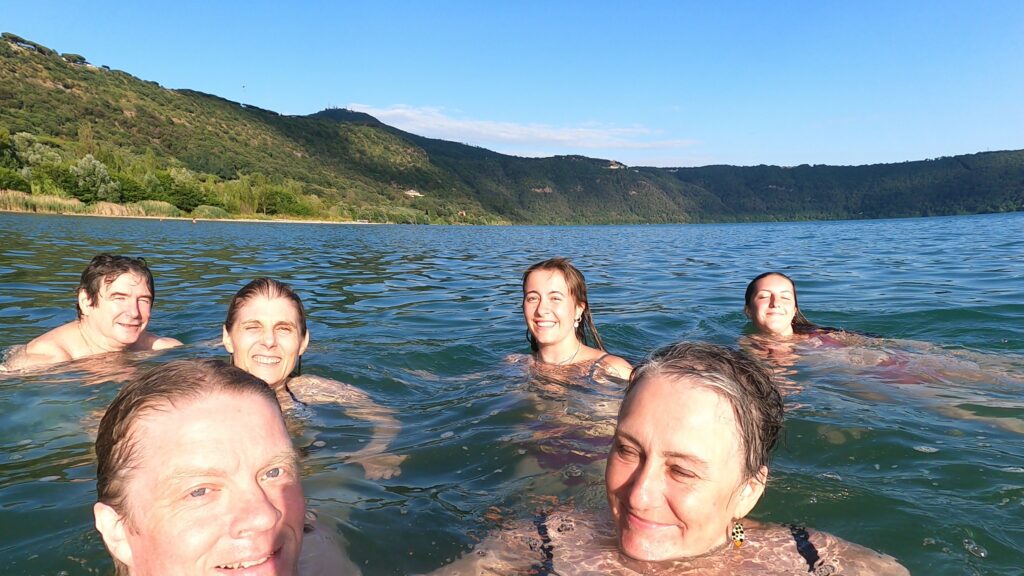We had received a tip at the hotel reception about a lake in Rome, where you can rent rowing boats. Perhaps there were bathing facilities there? The tip was Villa Borghese and the associated 80-acre garden. We took metro A to Piazziale Flaminio, from where you get up close to Piazza del Popolo (The People’s Square). This is a very nice piazza. Indeed, there were even a lot of Lionesses at Fontana del Nettuno!
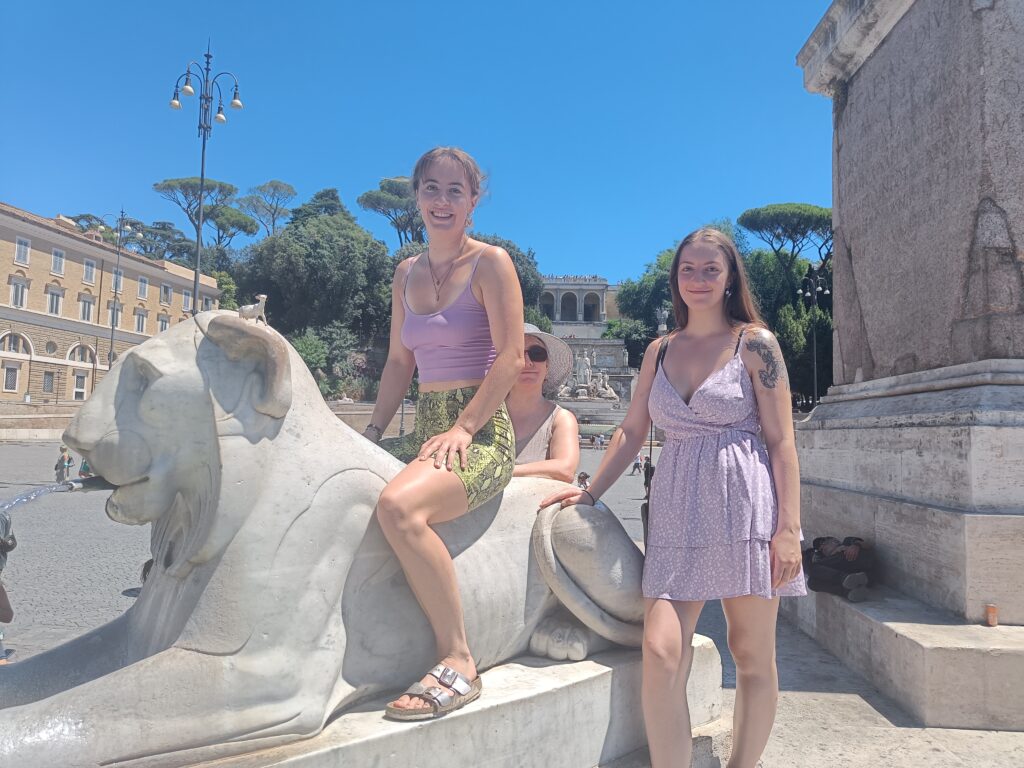
When you ascend from Piazza Popolo to the Pincio hill, you get a fantastic view from Terrazza del Pincio, including the Vatican.
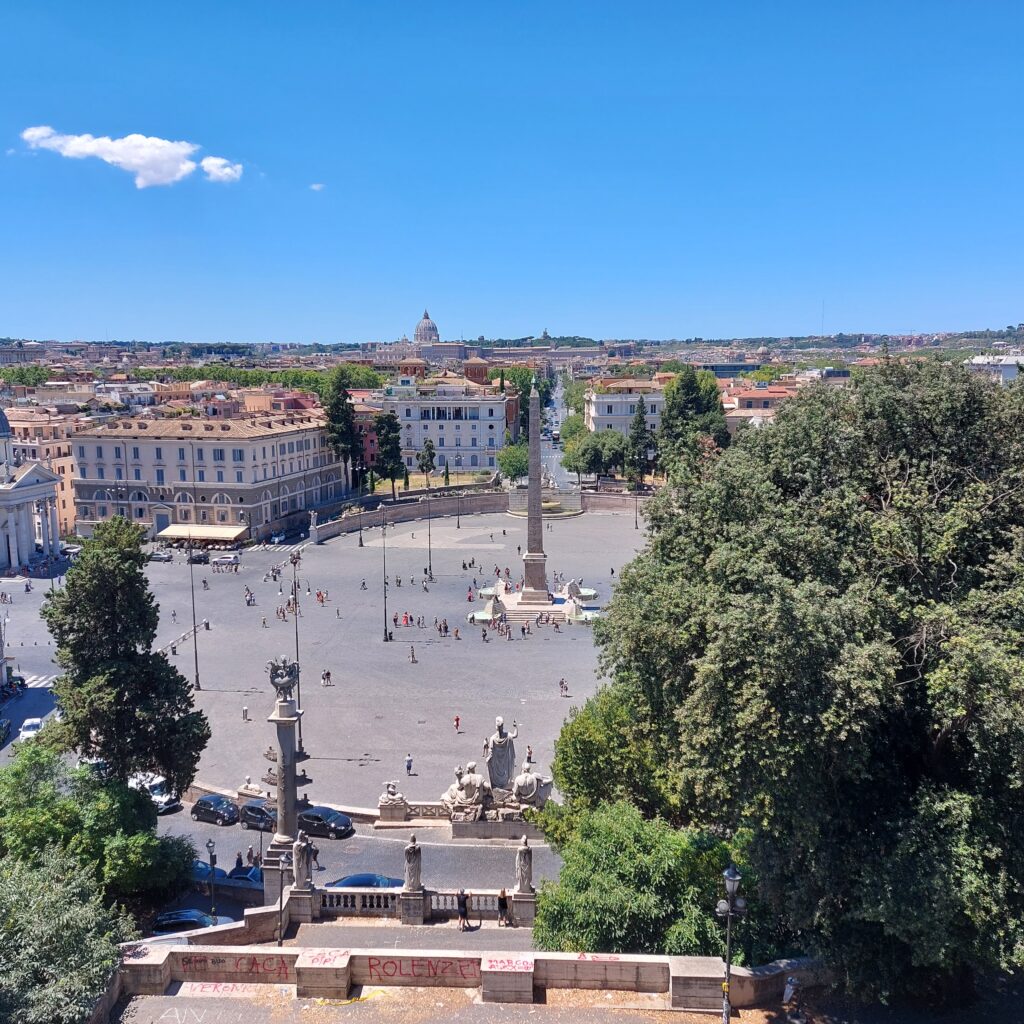
The Mansion, Villa Borghese Pinciana from 1616, today houses a museum, but was originally built for garden parties. The building was designed by Flaminio Ponzio on the order of Cardinal Scipione Caffarelli Borghese. The large garden is filled with works of art, including an insane amount of busts. Idun noted with excitement that several ancient mathematicians were represented (among others Pythagoras), but turned grumpy as it turned out that in this whole crowd of heads, all were male. We searched and searched and finally we found a female statue. Headless! It was more fun to check out the water clock from 1873.
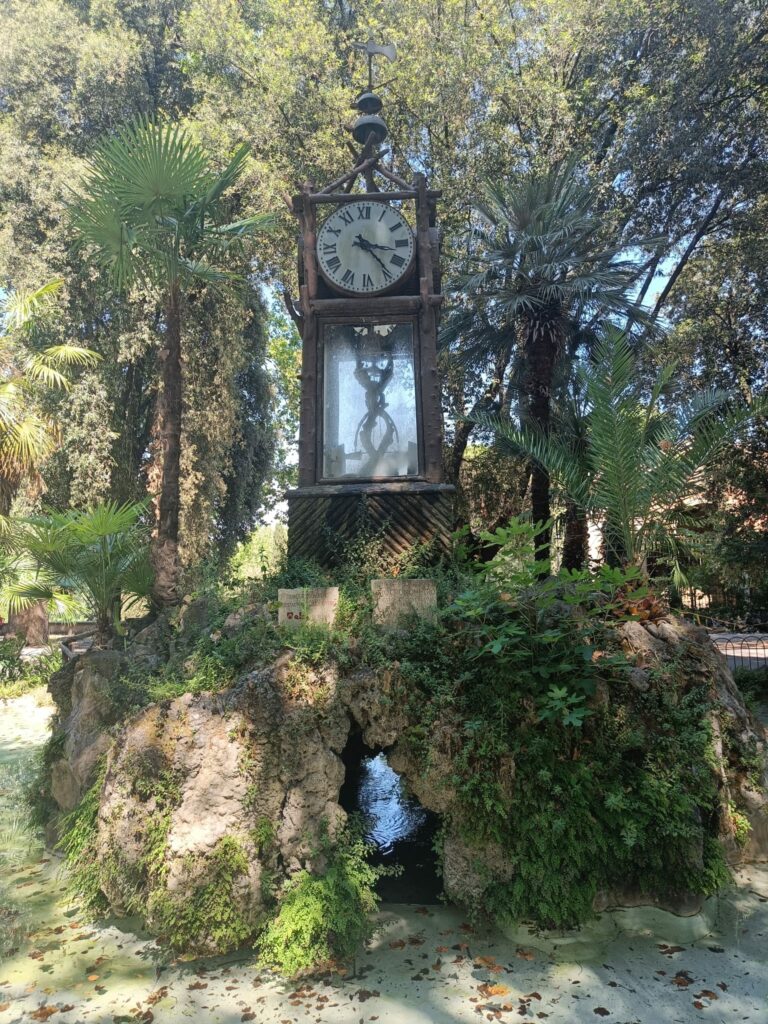
The hydrochronometer was designed by Gian Battista Embriaco for the World Exhibition in Paris in 1867, where it won both prizes and applause. It was difficult for us to see where the water actually comes up, which made the sight even better. At an entrance to the rural part of the garden we found the Fontana del Fiocco (Leaf Fountain). The temperature in the air was 35 degrees celcius, and Idun had an urgent desire for a fountain bath. ‘There are almost no people here!‘ But Knut didn’t think it was worth risking a fine of 450 Euro, so we did the statue game instead. Esculapius has been removed for restoration, so space was ready for the reservist Idun.
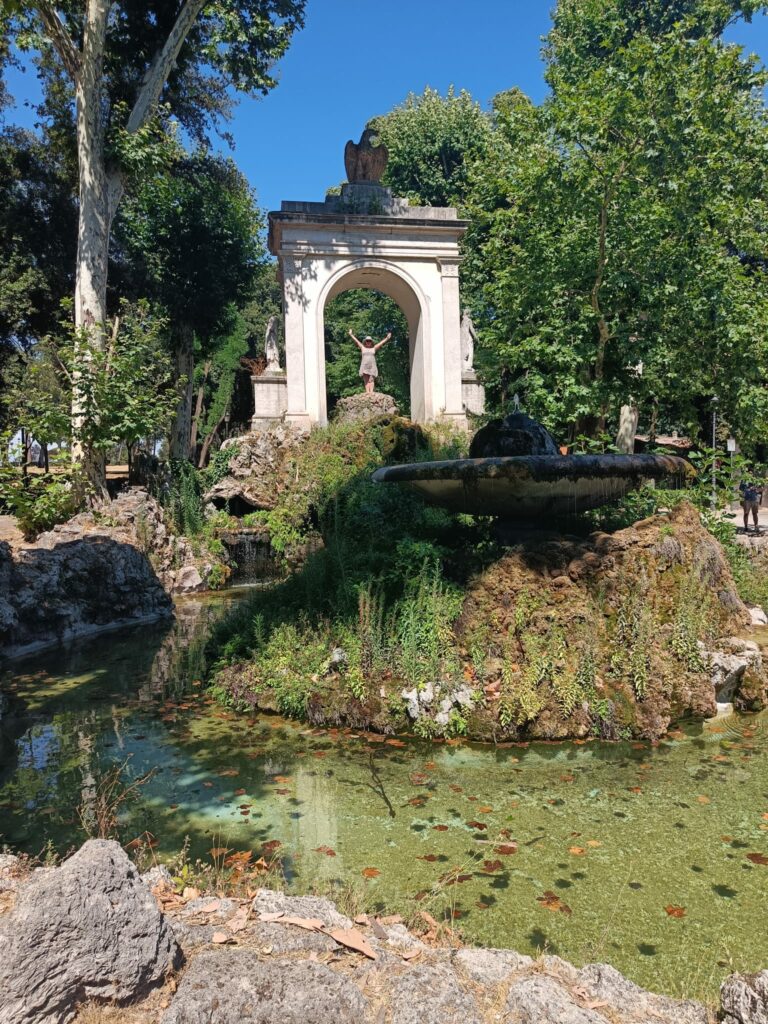
This water was incredibly fresh and clear and tempting, but to no use (the fountain is defined as a drinking water fountain). Correction: There were two turtles in the fountain, and they certainly enjoyed the water, so the water was indeed useful.
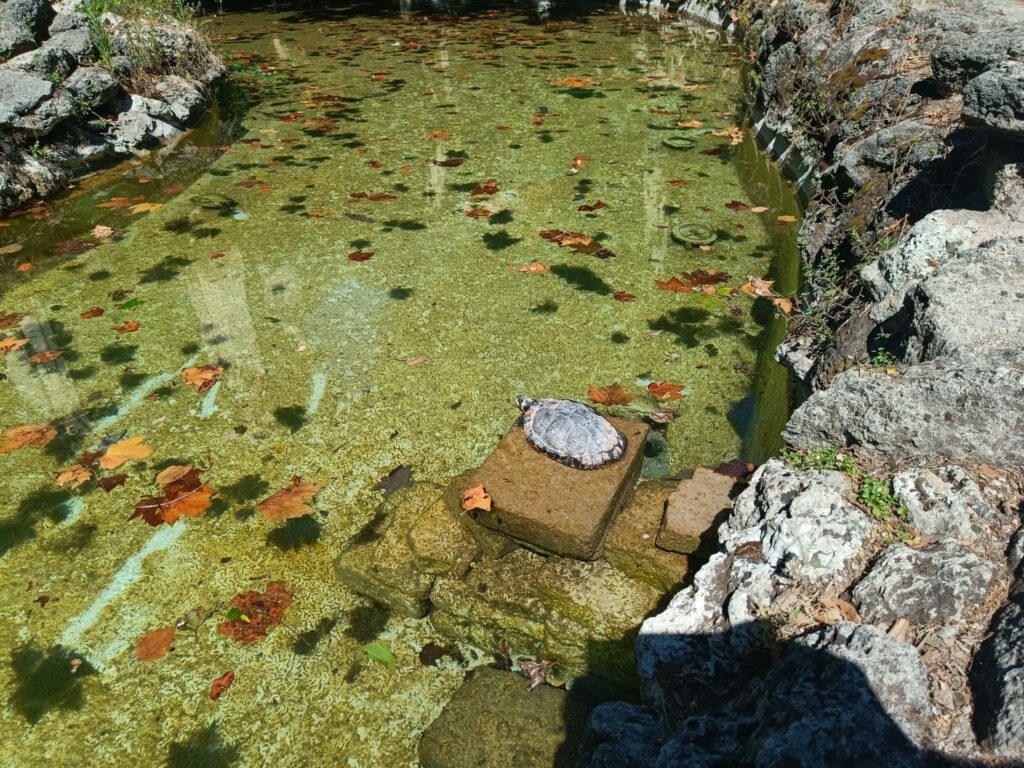
Further into the park we finally caught sight of the lake. This was bad stuff! There are approximately 40 springs and fountains in the park, and the water quality varies slightly, from dry to overgrown to green (from cynaobacteria?) to crystal clear.
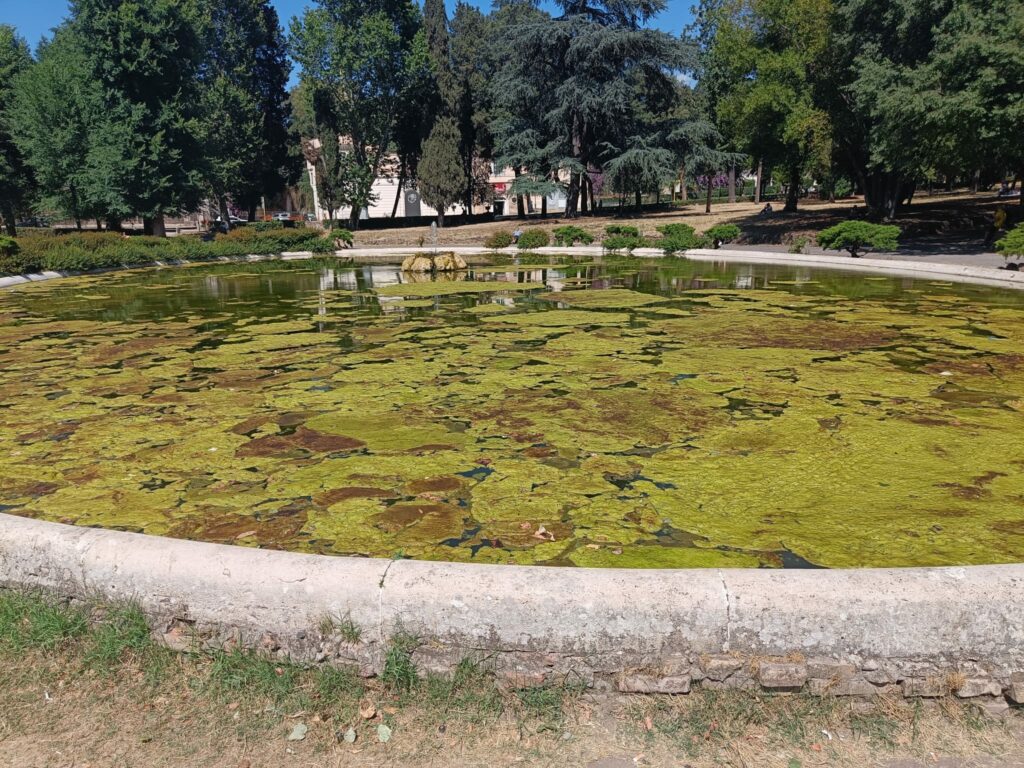
But where were the boats? The Fontana Rotonda di Villa Borghese is large, but still not a lake, so we just had to continue strolling. Giardino del Lago is a really beautiful park with large, tall trees of many kinds. With a little clean-up, as well as the benefits of a ban on single-use plastic, it can be even nicer… Rome was very dry in July, but under the trees there was green grass every now and then, and there were people who enjoyed life in the shade. Finally we found the lake. Beautiful! Green! On an artificial peninsula there is a temple dedicated to the God of medicine: ‘Tempio di Esculapio’, which was completed in 1792.
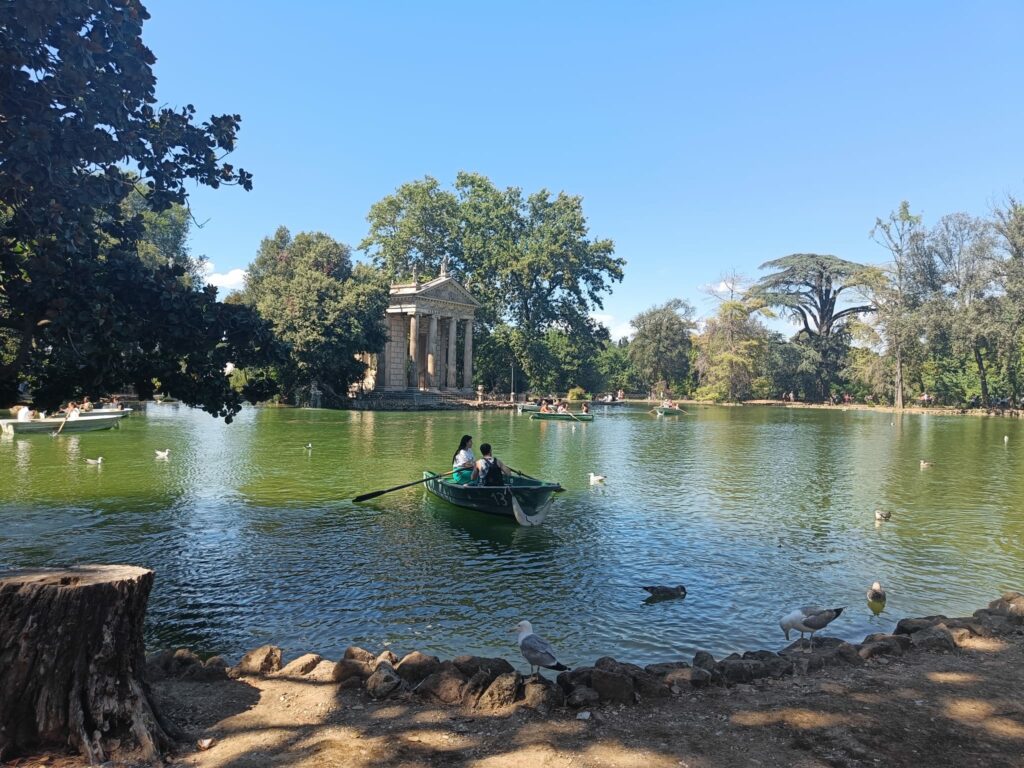
Idun was really excited. ‘Then we can rent a boat, row up to the small waterfall and tumble in. If we make it look like an accident, they can’t demand 450 Euros from us?‘ Knut was very skeptical. ‘It will be a big mess and very expensive. And is it really that tempting?‘ We took a closer look. There were birds everywhere. Swans, ducks, even a turkey. What about the bird shit? And that green colour… Bathing with cyanobacteria is very unhealthy. No, indeed, the bath in Lago Giardiano del Villa Borghese with a big disappointment turned to a ‘not’.
What do you do then? There is a café just north of the lake, ‘Satyrus Temporary Bar’, but we would not recommend it. Things are rather slow and the prices on the bill do not match the prices on the menu. Instead, go back towards Terrazza del Pianco and then in the direction of the Spanish Steps (Piazza di Spagna). We found a combined café and restaurant Ciampini at the south end of the park, half outside and half inside. Fresh and nice air, good food. With bird bath. We brought the goat Heidrun, who had a trip to the bathroom. But stuffing your feet in there? In the middle of the restaurant? No, we couldn’t do that.
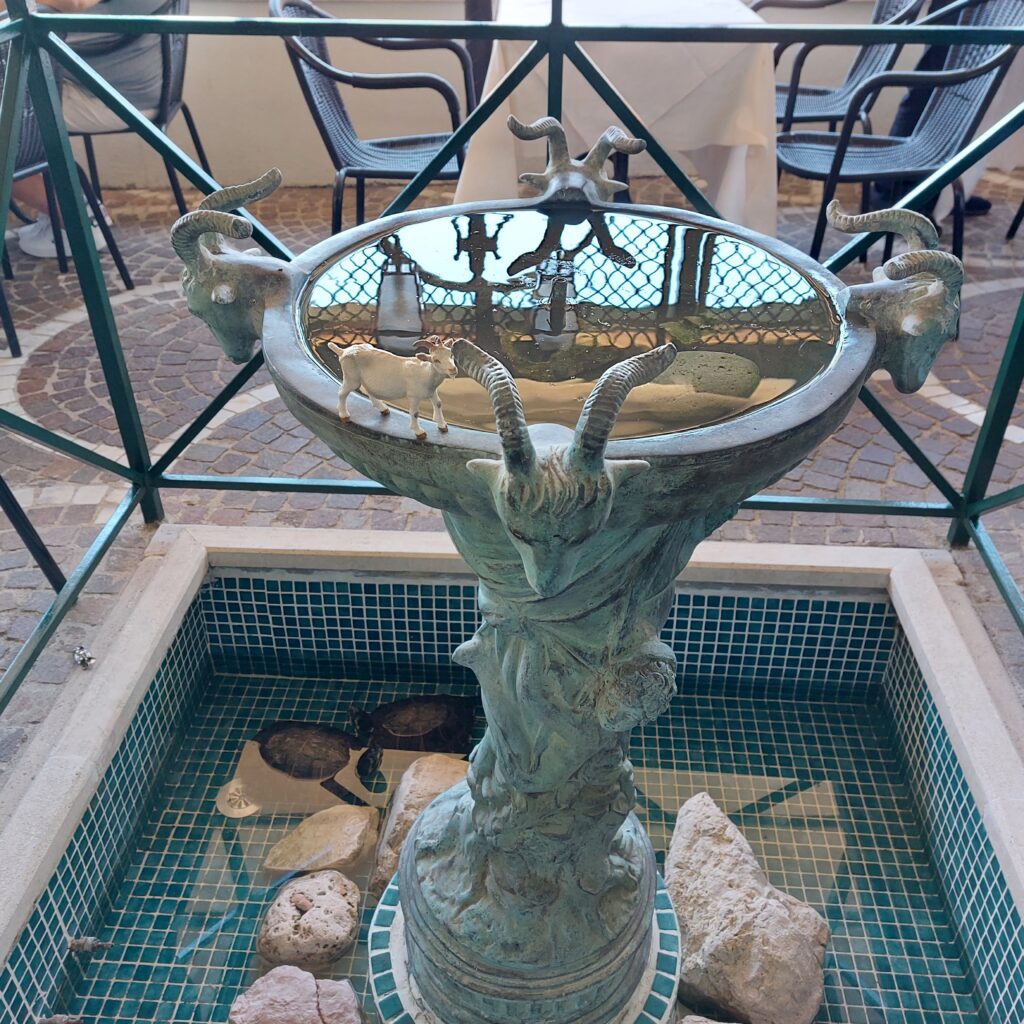
Outside, however!
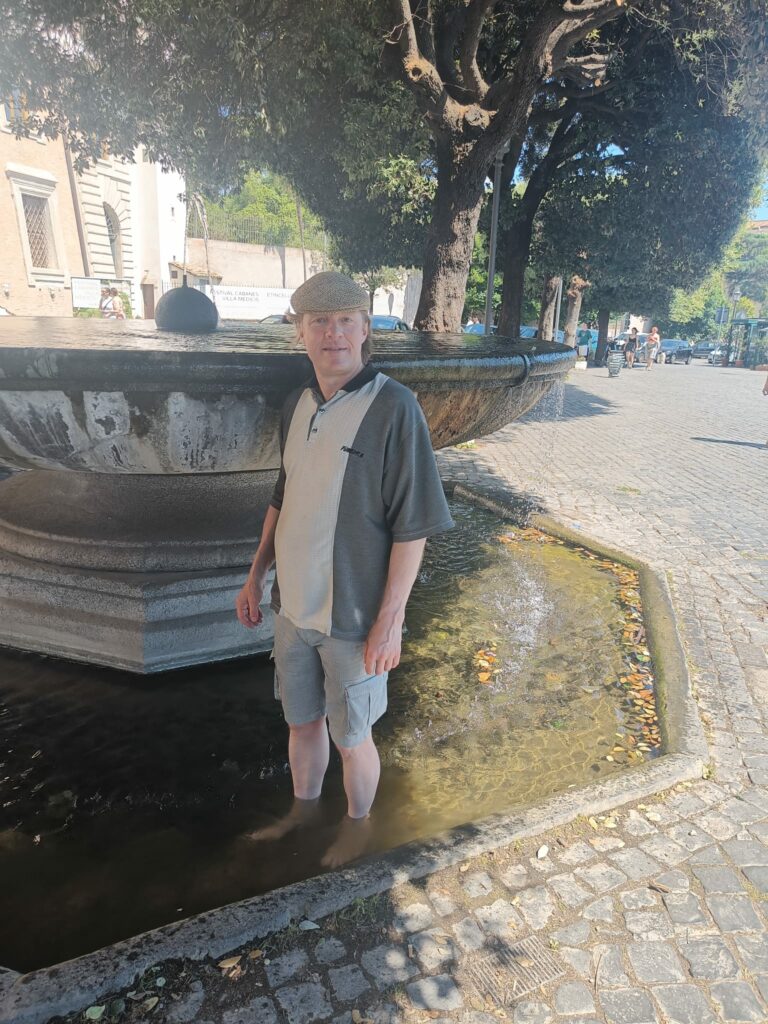
After a visit to Villa Borghese, a film from Rome might be an idea. One possibility is Franciolini’s film ‘Villa Borghese’ from 1953, or “Roman Holiday” with Kathrine Hepburn, also from 1953.
